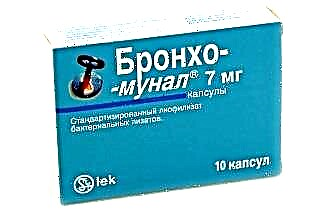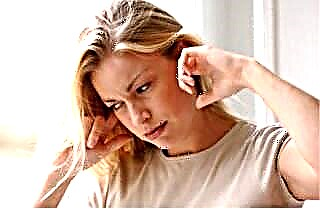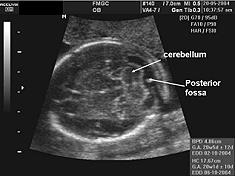 Meniere's disease does not pose a threat to life, but progressive disorders of auditory and vestibular functions, manifested in symptoms, deprive the patient of working capacity. Disorientation, dizziness, nausea, vomiting, hearing loss with the risk of developing complete deafness already in the second stage of the disease force the patient to completely change his usual way of life.
Meniere's disease does not pose a threat to life, but progressive disorders of auditory and vestibular functions, manifested in symptoms, deprive the patient of working capacity. Disorientation, dizziness, nausea, vomiting, hearing loss with the risk of developing complete deafness already in the second stage of the disease force the patient to completely change his usual way of life.
In the irreversible stage, the disease is incurable, however, timely diagnosis of Meniere's disease based on characteristic symptoms and treatment with folk remedies with compulsory drug therapy can help stop the emerging seizures and reduce the frequency and intensity of their manifestations. So, Alan Shepard (the first US astronaut), after the discovery of Meniere's syndrome in 1964, underwent a course of treatment and, returning to the space detachment, led the third American expedition to the moon.
Symptoms and pathomorphosis
In 85-90%, the disease is unilateral, however, over time, bilateral lesions may develop. Common symptoms include severe systemic dizziness and nausea with repeated vomiting.
Patients have a feeling of collapse, rotation of either their own body, or objects around.
This condition forces the patient to take a horizontal position, since it is difficult for him to maintain balance not only while standing, but also sitting. Such a person tries to close his eyes and not move, because any change in body position aggravates the condition.
Another common symptom is a feeling of stuffiness and fullness in the ear. This is accompanied by noise effects, dullness of hearing. Concomitant signs of the condition - tachycardia, shortness of breath, increased sweating, blanching.
Depending on the stage of development of the pathology, periods of exacerbation last from 2-3 minutes to 8 hours (less often - up to several days).
They can be provoked by stress, overwork, overeating, alcohol and tobacco smoke, medical procedures (including in the ear), etc. head and general weakness. In the irreversible stage, all these interictal symptoms do not disappear and become more pronounced, and the hearing loss is progressive. First, the patient ceases to hear low-frequency sounds, and then the entire sound range. With the onset of complete deafness, dizziness stops.
At the same time, there are specific manifestations characteristic of each stage of the development of pathology:
- In the first stage of labyrinthine dropsy, there are periodic noises in the ear and dizziness, congestion, pressure and discomfort. The increase in acoustic sensations and pressure indicates an impending exacerbation, which brings hearing impairment, restoring after a seizure. Nystagmus (frequent involuntary eye movements) occurs, directed towards the lesion. At the moment of braking, the direction of the nystagmus is reversed.
- In the second stage, exacerbations become noticeably more frequent, acoustic effects are permanent, the method of audiometry determines deafness of 2 or 3 degrees. Vestibulometric examination shows a decrease in reflexes during periods of remission and an increase in reflexes in the acute phase.
- The third stage is characterized by severe deafness. The frequency of vertigo attacks decreases, but otolith crises occur with an unexpected loss of orientation, which leads to falls of the patient.
Changes in signs (pathomorphism) of a pathological nature can occur with:
- expansion of the labyrinth cavity in the spiral canal and the system of semicircular canals, depressions of the bone vestibule,
- pinpoint numerous new and healed ruptures in the Reisner membrane,
- degenerative transformations of the cellular structure.
Outpatient treatment and prognosis for the patient
Since it is not possible to completely get rid of pathology with the technologies of modern medicine, the treatment goes in the following directions:
- relief of emerging seizures,
- reducing the frequency of attacks and their severity,
- long-term treatment aimed at preventing exacerbation.
To stop sudden conditions and reduce the number of attacks, drug treatment is used:
- diuretics (diuretics) to prevent excess lymph accumulation,
- antihistamines and sedatives.
Systemic medication aimed at stopping an attack combines the following set:
- antipsychotics - chlorpromazine, triftazine,
- atropine and scopolamine preparations - belloid, bellaspon,
- antihistamines - diphenhydramine, pipolfen, suprastin,
- vasodilators - no-shpa, nikoshpan,
- diuretics.
Complex treatment involves the use of medications that improve the microcirculation of the structures of the inner ear, as well as reduce capillary permeability:
- venotonics improve the walls and compensate for vascular dysfunction,
- neuroprotective agents limit and stop damage to brain tissue,
- betahistine has a histamine-like effect.
Usually, outpatient therapy is sufficient, but if vomiting occurs and recurs, hospitalization with intravenous and intramuscular drug administration is possible.
At the same time, drug therapy does not fully prevent hearing loss and the progression of hearing loss, but can only help reduce the noise in the ear, the severity and duration of the attack. If drug therapy does not give the expected results, surgery is prescribed, which, however, is highly likely to lead to complete hearing loss. Therefore, with bilateral lesions, patients are shown hearing aids. Surgical interventions can be of the following nature:
- Drainage operations. Their goal is to increase the outflow or drainage of endolymph from the inner ear. This also includes decompression surgery:
- drainage of the labyrinth, produced through the middle ear,
- drainage of the endolymphatic sac,
 fenestration of the semicircular canal,
fenestration of the semicircular canal,- perforation of the stirrup base.
- Destructive operations. These include:
- intracranial transection of the vestibular branch of the 8th nerve,
- laser exposure and ultrasonic destruction of labyrinth cells,
- removal of the maze.
- Operations on the autonomic nervous system, including:
- intersection of the drum plexus or drum string,
- cervical resection.
Chemical ablation is being considered as an alternative therapy. This method consists in the introduction of antibiotics (gentamicin, streptomycin) or alcohol into the labyrinth cavity. Early surgical therapy improves prognosis, but does not restore hearing.
Treatment of Meniere's disease is carried out against the background of a correct diet, a healthy lifestyle and a comfortable psychological atmosphere in the patient's environment. At the same time, physical activity between attacks is not limited. On the contrary, to improve well-being, the patient should regularly perform coordination exercises and train the vestibular apparatus.
Traditional medicine and home methods
To apply the methods of traditional medicine, first of all, it is necessary to professionally confirm the diagnosis so as not to be mistaken for Meniere's disease, for example, a hypertensive crisis, characterized by similar manifestations.And in no case should you refuse the help of a doctor who will help you avoid mistakes and tell you how to treat Meniere's disease.
During periods of the acute phase of the disease, it is necessary to help the patient to do the following:
- Take a horizontal position - preferably in a comfortable position, because any movement aggravates the patient's condition.
- Refuse compresses and lotions.
- If the acute phase has ended, and the patient still feels unwell, you can offer 1-2 lemon wedges with peel in tea before bedtime. You can also add mint, lemon balm, linden blossom there.
- After the end of the acute phase, the patient may still hear tinnitus for some time. To get rid of the noise, the following exercise is proposed: the palm is firmly pressed against the ear and rotates clockwise for 2 minutes, after which the palm must be sharply withdrawn.
The amount of water and salt that retains it should be limited.
 Instead, traditional medicine recommends introducing phosphorus-containing foods into the diet: fish, bran, nuts, yolk. Also recommended is seaweed, which can be eaten fresh or dried, adding a teaspoon to various dishes.
Instead, traditional medicine recommends introducing phosphorus-containing foods into the diet: fish, bran, nuts, yolk. Also recommended is seaweed, which can be eaten fresh or dried, adding a teaspoon to various dishes.
Among the popular infusions and mixtures, the following are described:
- Dried willow tea and red clover in inflorescences (1 tbsp. Spoon), taken in equal shares, are boiled for about three minutes, then filtered and taken three times a day before meals, a tablespoon.
- Clover inflorescences at the rate of 2 g per 300 ml are kept in boiling water for half an hour. After that, the infusion is filtered and taken four times a day before meals for ¼ glass.
- In the initial phase of the blooming of the clover, the heads are collected, which are placed in the jar, but not compacted. The mound is filled with vodka and infused for three weeks. It is taken three times a day before meals for a teaspoon.
- Dry dill (a handful) is poured with boiling water and stored in a thermos for half an hour. It is consumed three times a day before meals, half a glass for 1.5 months. Dill essential oils dilate blood vessels and reduce blood pressure, improve blood flow.
- With dizziness, 250 g of onions are ground in a meat grinder, mixed with a glass of honey and added to the diet for a month - three times a day before meals, a tablespoon.
- Rosehips, meadowsweet flowers, hawthorn and motherwort grass are mixed in a tablespoon and poured with a liter of boiling water, hiding the mixture in heat for a day. And then, for 3 months, three times a day before meals, one glass is drunk.
- For nausea and vomiting, 20 g of mint is immersed in half a liter of boiling water and insisted for 20 minutes. For the same amount of water, you can take 12-13 g of dry centaury or caraway seeds. This infusion is drunk in 2 tablespoons: mint - every half hour, centaury and cumin - every hour or two.

 fenestration of the semicircular canal,
fenestration of the semicircular canal,

